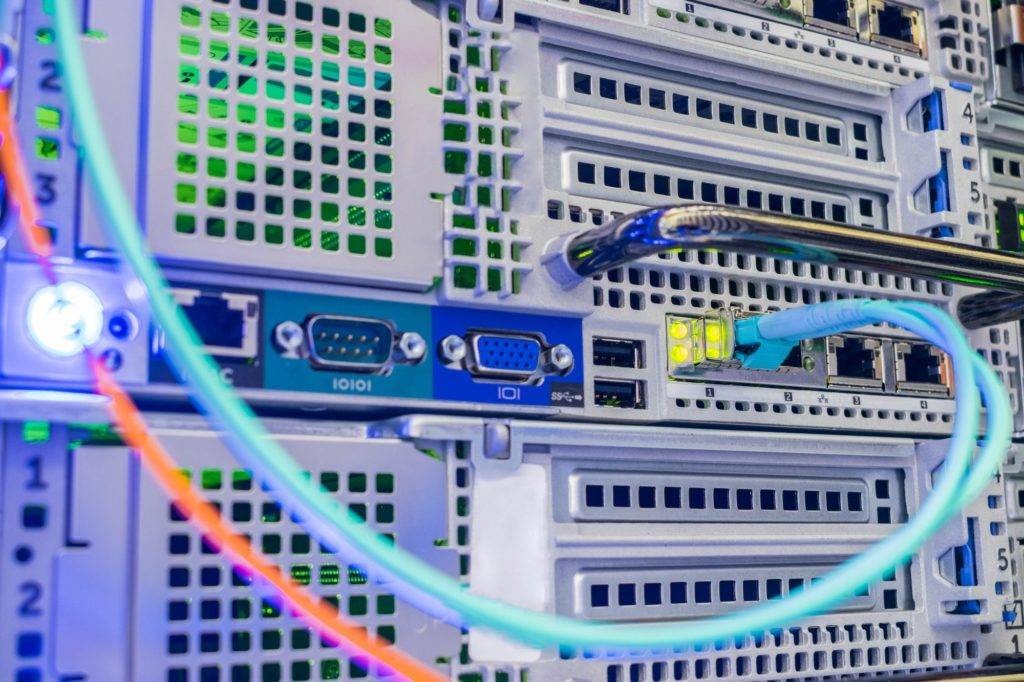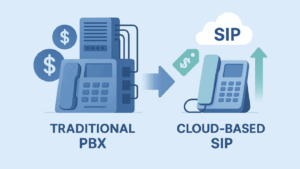
IP Trunking vs. SIP: What’s the Difference?
To many people living in the 21st century, SIP trunking is just one more acronym or tech term in a sea of other, existing ones. IP trunking is another acronym–for different reasons.
Yet, when we look in some depth at the technologies these two acronyms represent, we can see that they are familiar to us already, just not with these names. Or, if they’re not familiar now, they will be in the very near future.
This article breaks down the functions of both IP trunking and SIP trunking and makes comparisons between the two. If you find all this as interesting as we do, keep reading.
Internet Protocols (IP)
We’ll begin this brief explanation of “SIP trunking for dummies” with a look at the development and uses of Internet protocols. This part takes us back in time–to the early 1980s–but is fundamental to understanding what’s going on now, in 2019.
Think of Internet Protocol as a “handshake” between Internet-connected computers, as if they were saying to each other, “I’ll talk with you if you talk with me. (shake) Agreed.” Then the transmission of information can begin.
IP is the principal communication protocol of digital message formats. It guides message exchange among computers on either a single network or a series of interconnected networks.
The combined “Transmission Control Protocol” and “Internet Protocol” process is called TCP/IP. It enables the vast majority of Internet communication– from e-mail messages to complex websites to video conferencing.
This almost brings us to SIP and IP trunking. But we have to talk about telephones first since the telephone network both preceded and intersects with the Internet.
Plus, to jump forward a bit, telephonic communication is really what we’re discussing in this article. It’s never been that far removed from the Internet, either.
The Telephone System(s)
Many households today still have telephones on the old AT&T phone network that use wall jacks and thin cable made from twisted pairs of copper wire.
This cable was developed by Alexander Graham Bell in 1881, shortly after he invented and patented the telephone.
Some people still remember when the giant AT&T corporation held a natural monopoly over phone service in the U.S. by owning most of the national phone network.
This network remains in place today–just not the monopoly. It’s often called POTS, which stands for plain old telephone service (not all technology acronyms involve tech jargon).
There is an entirely different, but intersecting phone network in place today: The Internet itself. Along with everything else it does, the Internet now carries phone calls using VoIP (Voice over Internet Protocol).
The Role of VoIP in Today’s Phone Service
VoIP makes Internet-based phone service possible. In a VoIP system, analog voice signals (i.e., from POTS) are converted into digital data packets, just like any other Internet data.
These packets are then transmitted across either a virtual private network (VPN) or the larger Internet.
VoIP is available to home consumers, usually through a cable or direct satellite company, and is often referred to as “cable phone.”
There are also a number of VoIP outfits that cater to businesses by providing private business exchange (PBX) phone systems. PBX services use either existing twisted-pair connections or private internal VoIP networks (VPNs).
The latter is most common among larger businesses since they enjoy greater economies of scale. In either case, the internal phone system ultimately connects to the Internet, not the old POTS phone network.
This foretells a future without twisted copper wire since most phone companies now provide Internet connectivity more than they do old-style phone service.
ATA
ATA stands for analog phone adapter. This is a device that plugs into a telephone line (wall jack) on one end and either a computer or a cable modem/router on the other end. It’s the first stage in converting analog signals to digital ones.
VoIP Phones
These are specialized digital phones that connect directly to computers and the Internet via either an Ethernet line or Wi-Fi.
VoIP phones are IP phones equipped with VoIP capabilities. They require minimal configuration. PBX vendors and others who offer hosted VoIP services usually sell VoIP phones to their clients as well.
In today’s phone service, VoIP bridges two vastly different forms of telephone communication. First, there is the existing phone network, as mentioned above. This is gradually being updated from twisted pair to fiber optic cable.
The Internet itself is the second form. It still relies on both coaxial and fiber optic cable, WiFi, and a global network of connected computers to send all its messages from one user or computer to another.
SIP
In both IP and traditional telephony, network engineers have always made a distinction between two different phases of a voice call: set-up and data transfer. Each of these phases uses a completely different protocol, making the process a complicated one.
When SIP (Session Internet Protocol) becomes a player in this process, though, things change a bit.
SIP is a signaling protocol that’s responsible for creating, modifying, and terminating an online phone call or teleconference session that uses VoIP (which, much like SIP, is a sub-layer of IP).
SIP takes over the call set-up processes, which involve both technical processes and call-scheduling functions (that employ a user interface).
SIP also handles required changes to calls in process, such as changing from a one-on-one call to a three-way conference call.
SIP can facilitate not only voice calls but also video and audio “multicasting” and instant messaging in teleconferences. There is software (called “softphone”) that gives one-on-one or conferencing capabilities to computers using SIP.
What SIP does is complicated and involves a lot of computer code. But you could think about it as a digital process analogous to old-time telephone operators.
Those workers sat at switchboards for long hours, constantly plugging and unplugging wires to make sure calls went through and proceeded smoothly. Think how much easier this with SIP!
Trunk Lines
Here too is a term that recalls the past. In this case, it’s a past that goes back a couple of centuries. The original use of the term “trunk line” was for railroads and it referred to a main line or track that other, smaller ones were connected to.
This was what’s known as a “tree and branch network” (hence the word “trunk”), which used one main artery–whether a main railroad line, a telephone trunk, or a cable trunk.
That artery connected to smaller lines that conveyed the passengers, cargo, or messages to their destinations.
In the Internet Era, trunking is a similar concept and process, whereby a virtual trunk functions as a connection between an organization and its ITSPs (Internet telephony service providers), most likely PBXs.
How does SIP trunking work then?
SIP trunks are installed virtually over businesses’ existing internet connection. This takes place either through lines that link SIP trunks directly to other IP phone traffic on the Internet or via a VPN.
IP Trunking vs. SIP Trunking
IP trunking is a very large-scale operation that relies on VoIP. In this process, an entire organization enters the wide-open Internet space using a single connection. That connection is then split among the individual computers taking part.
VoIP (IP) trunking is used in millions of homes (e.g. for cable phone). However, IP trunking is used almost entirely by larger businesses and organizations. They’re the ones using multiple telephone lines and accompanying ancillary services.
IP trunking and VoIP in combination make a pretty inexpensive medium of communication; thus, it makes sense that this is where SIP would enter the scene. SIP trunking only adds more efficiency and cost savings to the bigger picture.
SIP trunking can also unify communications across an organization. And it’s scalable, meaning new users can be added at marginal cost. These are just a few of the benefits of SIP trunking.
Can You Hear Me, Mr. Watson?
What if Alexander Graham and his assistant, Mr. Watson, could be with us today to see (and hear) what has happened with their famous invention?
We think they’d be proud since they were, after all, inventors and innovators. And what have we been discussing here if not the inventions and innovations we know as and SIP and IP trunking?
During the late 19th- and early-20th centuries, following Bell’s invention of the telephone and all the innovations that followed, it took decades for phone service to enter the homes of the general public.
Like movies and radio, the phone was a novelty that fascinated people; still, at first, they had no idea what to do with it. It was businesses that hit the upslope of the adoption curve first.
It’s only slightly different today with Internet telephony. The consumer-targeted cable phone concept was one of the earlier applications of VoIP, as were Skype and other Internet-based alternatives to the storied copper-pair.
But the business world has the resources to remain in the foreground of the technological developments discussed here.
Having read this article, if you’d like more information on SIP and its features as well as how it benefits businesses, please go to our website. We’d be very happy to help you out!


